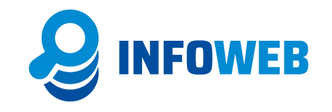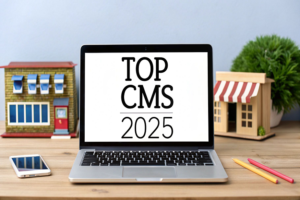From Legacy to Leader: Migrating to a Modern CMS for Media Companies

Migrating from an outdated, legacy Content Management System (CMS) to a modern platform is a massive undertaking, but it is one of the most critical projects a media company can execute to secure its future. The migration process is not merely a technical swap; it’s an operational transformation that moves a publisher from a restrictive, slow infrastructure to an agile, innovative content leader.1
The Imperative for Migration
The decision to migrate is typically driven by the inherent limitations and rising costs of legacy systems:2
| Legacy System Pain Point | Modern CMS Benefit (The “Leader” State) |
| Inflexibility & Technical Debt | Agility: Decoupled/Headless architecture allows rapid channel launches (COPE). |
| High Maintenance Costs | Lower TCO: Cloud-native, SaaS models shift maintenance burden to the vendor. |
| Sluggish Performance | Speed: Modern frameworks and CDNs deliver faster page load times, improving SEO and user experience. |
| Security Vulnerabilities | Resilience: Automatic security patching and enterprise-grade compliance. |
| Monolithic Workflow | Efficiency: Unified interface streamlines content creation for all platforms. |
A Four-Phase Strategy for a Successful CMS Migration
A successful migration CMS for media companies requires disciplined planning and execution across technical, editorial, and business stakeholders.3
Phase 1: Assessment and Strategy (The “Why” and “What”)
This initial phase defines the scope, goals, and content strategy for the new system.4
- Define Business Objectives: Move beyond just “replacing the old site.” Define measurable goals: e.g., increase article velocity by 30%, launch three new digital products, achieve a 15% reduction in page load time.5
- Conduct a Content Audit: Inventory all existing content (articles, images, videos) to determine what is relevant, what needs to be archived, and what requires restructuring.6 This is the time to eliminate content debt.
- Content Modeling: This is the most critical step for multi-channel agility. Define a structured content model (e.g., a “News Article” has a mandatory “Headline,” “Author,” “Body Text,” and “Image ID”).7 This model is platform-agnostic, ensuring content can be reused instantly.
- Vendor Selection & Architecture: Finalize the modern CMS (often a Headless or Hybrid model) and secure the implementation partner.
Phase 2: Building and Integration (The “How”)
This phase involves setting up the infrastructure and connecting the new CMS to the rest of the publishing ecosystem.
- Platform Setup: Install and configure the new CMS, establishing content types and user roles based on the content model defined in Phase 1.
- Integration with the Tech Stack: Connect the new CMS via APIs to critical systems:
- Monetization: Ad servers (e.g., Google Ad Manager) and subscription/paywall services.
- Data: Analytics platforms (e.g., Google Analytics, Amplitude) and CRMs.
- Editorial Tools: Digital Asset Management (DAM) systems and translation services.
- Front-End Development: Build the new user-facing applications (website, mobile apps) using modern frameworks (e.g., React, Vue). These “Heads” pull content from the CMS API, confirming the principle of content/presentation separation.8
Phase 3: Content Migration and QA (The “Heavy Lift”)
This is the most technically challenging and time-consuming part, where the content moves from old to new.
- Automated Migration: Rely heavily on scripting and automated tools to extract content from the legacy database and map it into the new structured content model. Manual migration should be avoided except for complex landing pages or core archival pieces.
- SEO Strategy and Redirects: Develop a rigorous URL redirect plan (301 redirects) to map every old URL to its new counterpart.9 Failure here leads to catastrophic drops in search rankings.
- Quality Assurance (QA): Conduct exhaustive testing:
- Functional Testing: Ensure all features (search, commenting, personalization) work correctly.
- Performance Testing: Stress-test the system for traffic peaks.
- Editorial Workflow Testing: Ensure editors can publish content efficiently across all channels.
Phase 4: Launch and Optimization (The “Go-Live” and Beyond)
The final phase includes the launch, immediate post-launch support, and continuous improvement.
- Training and Change Management: Launch a comprehensive training program for the entire editorial and marketing staff. Change management is crucial; editors must be comfortable with the new content modeling paradigm.
- Go-Live: Execute the cutover. A phased rollout (e.g., migrating a smaller vertical site first, then the main site) can mitigate risk.10
- Immediate Monitoring: Closely track server performance, error logs, and key business metrics (traffic, conversions, ad impressions) immediately after launch.11
- Iteration and ROI: The migration isn’t the end; it’s the beginning. Leverage the new platform’s agility to quickly launch the innovative products defined in Phase 1, proving the Return on Investment (ROI) of the entire migration project.





